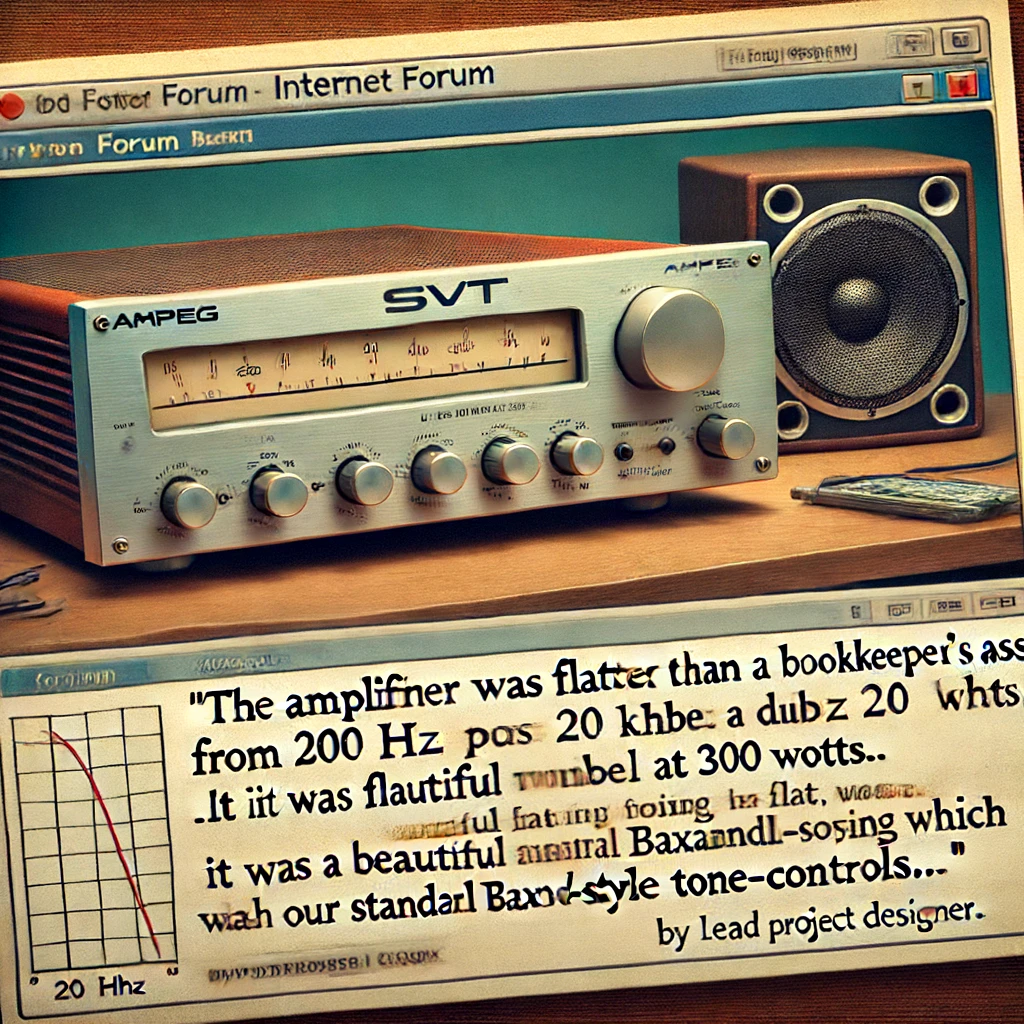Sound Quality Requires Fidelity
Jun 2024 — Promptly after GAGA’s introduction in 2009, some internet/forums yap heckled “hi-fi design” and veered off from there; that was 15 years ago. Recently I found this gem: “The [300-watt Ampeg SVT] amplifier [frequency response] was flatter than a bookkeeper’s ass from [20 Hz to 20 kHz] plus or minus a [decibel] at 300 watts. It was a beautiful high-fidelity amplifier…it was flat; all the voicing was [per] standard Baxandall-style tone-controls…” – Roger Cox, lead project designer of the celebrated Ampeg SVT amplifier + speaker combo, ~10:00 into https://www.youtube.com/watch?v=bhWz2pUWrvE&t=600s
https://www.youtube.com/watch?v=bhWz2pUWrvE
This is interesting because “hi-fi design” implies target of “Perfection” versus (purposeful or allowable) tainted distortion.

If the meaning of “Sound Quality” is merely ‘100% perfect match in all known measurements’ between live event being recorded and later playback then incongruity is assured because from moment-to-moment, listener perception is ever-changing. Measurements, it would seem, likely exist in attempt to replace subjective listener with objective test.
One problem is that not all tests are yet known, devised and realized in scientific literature and via practical test equipment, apparatus or means.
Another problem is that not all aspects requiring testing (in order to ‘adequately measure’ Sound Quality) are known let alone agreed-upon…maybe echoing Donald Rumsfeld’s infamous ‘you don’t even know what you don’t know’ conundrum.
A corollary problem is that existing ‘agreed upon’ tests are often questioned. For example, if the familiar 20 Hz – 20 kHz high-fidelity spectrum is true, then (a) how is the plainly audible difference between a 15 kHz sine-wave vs square-wave (whose first mathematical difference between the two waves exists at 45 kHz) explainable; and (b) how does (a) affect “sound quality”?
Another problem is that systems measuring identically often perform subjectively differently: “sounds like” and “sound better” are common.